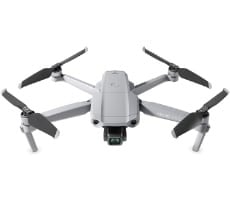Canon EOS Rebel T1i DSLR Camera Review
One of the upgrades in the Rebel T1i from previous consumer-grade models is the DIGIC 4 Imaging Processor which provides faster processing of fine detail and natural color reproduction and 14-bit analog-to-digital conversion for smooth color tones and less risk of banding. Canon claims this processor also speeds up camera operations.
The DIGIC 4 Imaging Processor works in combination with the EOS Rebel T1i's CMOS (complementary metal oxide semiconductor, ie: all digital) sensor to give you the best possible clarity and tonal range in your images. The CMOS sensor used in the Rebel T1i uses many of the same technologies that you'll find in Canon's professional cameras. Unlike professional cameras though, the Rebel T1i has an APS-C size sensor which creates an effective 1.6x field of view (compared to 35mm format). This 1.6x conversion factor is common in all of Canon's consumer-grade DSLRs. Nikon has a similar conversion factor in its consumer-grade DSLRs.

Obviously another highly touted feature of the Rebel T1i is its ability to capture full HD video at 1920 x 1080 resolution. The Rebel T1i's frame rate of 20fps at 1080p is a bit disappointing, but it's not completely unusable. Some users may also prefer to use this mode as a high-speed continuous shooting mode rather than a video mode. Although each individual frame may only be the equivalent of a 2 megapixel image, 20fps is certainly a very fast burst rate. Realistically speaking, however, most users will treat the Rebel T1i as a 720p model since that's where you're going to get the best quality video at a much more fluid 30fps.

In addition to the ability to review images and video on an HDTV, the Rebel T1i provides a 3-inch Clear View LCD with 920,000 dots/VGA resolution on the back of the camera. For added protection, the LCD also has anti-reflective and scratch-resistant coatings. This LCD is the same screen found on Canon's professional models such as the EOS 5D Mark II and an improvement from the screens found on previous Rebel models.

The Rebel T1i's continuous shooting option at 3.4 fps is pretty much on-par with what we expect for cameras in this space. If you use a class 6 or higher SD or SDHC memory card, Canon claims you'll be able to capture up to 170 large/fine JPEG images or up to nine RAW images in a single burst.
Other enhancements to the Rebel T1i include the Auto Lighting Optimizer that can lighten dark areas of a scene while keeping the correct tonal detail in bright areas. The camera also supports a wide ISO range from 100-3200 with ISO expansion options of 6400 and 12800. To help combat noise in these higher ISO ranges, the DIGIC 4 Image Processor incorporates noise-reduction technology.
Finally, to help improve the Rebel T1i's resistance to dust, Canon included its popular EOS Integrated Cleaning System. Canon also upgraded the Self-Cleaning Sensor Unit for the Rebel T1i with a fluorine coating on the low-pass filter.








